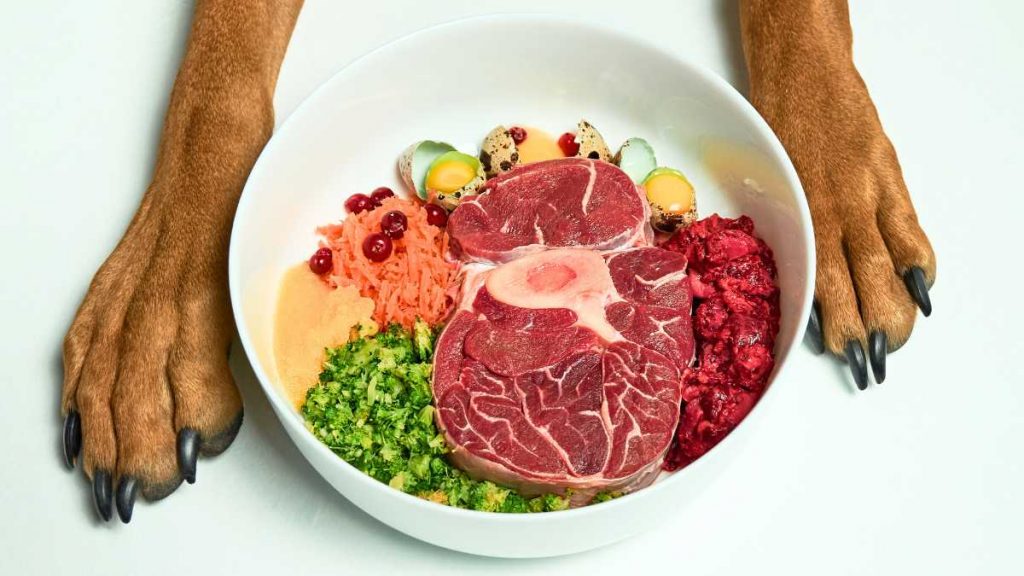Dogs make wonderful pets and, in many homes, are treated like one of the kids. They need to be fed a healthy, well-rounded diet to ensure their optimal health. Dogs with certain medical issues often benefit from eating food with low protein dog food. Foods that fall into this category have a dietary protein content of less than 20% on a dry matter basis.
In this article, we will discuss what low protein dog food is, medical conditions that require them, dogs that should avoid them, what to consider when choosing them, and the top five best low protein dog foods on the market.
Table of Contents
What Is Low Protein Dog Food?
Dog meals classified as low protein dog food often have less than 20% dietary protein on a dry matter basis, which is lower than the percentage of protein found in conventional adult dog foods.
It is crucial to utilize the dry matter protein content rather than the “as-nourished” number provided on the certified analysis, which takes the product’s moisture content into account when comparing the protein content of two different dog food products.
Low-protein dog food can be any food that contains less protein than the AAFCO recommendations, despite the fact that there is no formal definition of low-protein dog food. AAFCO advises that diets designed for pups and females who are actively trying to conceive have at least 22.5% protein content and at least 18% protein on a dry matter basis in adult dog meals. Low-protein foods are those with a protein level of less than 18%.
There are no super low protein dog foods on the market because the majority of dog foods are high in protein. As a result, some dog meals that include a protein level that is close to the lower limit of the AAFCO recommendations may also be deemed low protein.
As with any diet, it’s important to consult a vet to determine the best option for your dog while considering their age, health, and dietary requirements.

Medical Conditions Requiring Low Protein Dog Food For Dogs
A low-protein diet is not necessary for elderly, healthy dogs. However, a low-protein diet is necessary for some medical conditions.
Chronic kidney disease, liver disease, and purine urolithiasis, which can frequently result in bladder stones in dogs with underlying liver disease, are a few disorders that may benefit from a low-protein diet.
Different levels of protein are needed in dog food for various medical issues. Dogs with chronic renal illness, for instance, need diets containing 14–20% DM dietary protein, and those with liver disease need diets containing 15-20% DM dietary protein. They should be given an even reduced protein diet with 10-15% DM dietary protein if they have hemorrhagic encephalopathy. In order to identify the proper protein amount for a dog’s particular medical condition, it is crucial to see a veterinarian.
Dogs That Should Avoid Low Protein Dog Food
Some dogs should completely avoid low-protein dog foods, while others with particular medical issues should benefit from them.
Low protein diets should not be given to growing puppies, or pregnant, or nursing dogs because these life stages have a high demand for nutrients, particularly protein. They may have stunted growth and malnutrition if their protein intake is restricted.
It’s recommended to steer clear of it entirely for older, healthy dogs that don’t have any medical issues that call for a low-protein diet. Since low protein diets may affect a dog’s nutrient balance, they should only be given to dogs that have a medical need for them. A veterinarian can recommend a diet that will meet your dog’s needs specifically.
What to Consider When Choosing a Low Protein Dog Food?
Consult your veterinarian before making any dietary modifications if your dog has a medical condition that necessitates a low-protein diet.
To help manage their disease and give them the nutrients they need to maintain their general health, dog food recommendations are typically given. The best choice is prescription veterinary food made for particular medical conditions.
There are a few things to think about while choosing a low-protein dog food. Finding dog diets with extra omega-3 fatty acids, antioxidants, vitamin E, and vitamin C is advised. By lowering inflammation and free radicals in the body and organs, these nutrients can enhance the quality of life for your dog.
It’s crucial to buy dog food made from premium, whole-food ingredients in addition to these qualities. Because natural dog food is easier to digest, your dog’s body can absorb more nutrients from it. Artificial fillers and additives in dog diets deprive your dog of the nutrition he needs to stay healthy.
5 Best Low Protein Dog Foods: Product Reviews and Information

Low-protein dog food can be a suitable alternative for healthy dogs that wish to manage their weight, even though it is necessary for dogs with specific medical disorders. Finding the ideal low-protein dog food can be difficult, though. We’ve researched and reviewed the five best low-protein dog foods on the market.
01. Nutro Ultra Weight Management Dry Dog Food
All dogs, not just those who require a low-protein diet, would benefit greatly from choosing Nutro Ultra Weight Management Dry Dog Food. It nevertheless has a modest protein level of 23%, which is higher than the minimum standards established by AAFCO.
It includes grains and high-quality protein for a well-balanced diet, including chicken, chicken meal, lamb, and salmon meal. In addition to natural components like coconut, cabbage, and pumpkin to increase antioxidants, it contains a variety of vitamin and mineral supplements.
However, due to its low glucosamine content, it is inappropriate for large or senior dogs.
Benefits:
- Excellent protein
- Different vitamins and minerals
- Natural substances
- DHA is found in eggs and fish.
Negatives:
- Low level of glucosamine
02. Natural Balance L.I.D. Grain – Free Dry Dog Food
Natural Balance L.I.D. Grain is our top pick for low-protein dog food. Lamb is the only primary source of meat protein in it, making up 22% of its total protein composition. The second ingredient is brown rice, which is simpler to digest. For maximum health, it is additionally supplemented with vitamins and minerals. Since this is a high-end item, not all budgets may be able to afford it.
Benefits:
- Upscale recipe
- Excellent protein
- Different vitamins and minerals
- Fewer ingredients for dogs with sensitive stomachs
Negatives:
- Premium cost
- Ingredients in rice are plentiful
03. Gentle Giants Dog Nutrition Dry Dog Food
Food for Gentle Giant Dogs our top option for the most economical low-protein dog food is dry dog food. The initial ingredients are chicken and fish meal, and the protein content is 22%.
As well as different vitamins and minerals for general health, it also contains prebiotic fiber and probiotic components for simple digestion. It comes in a sizable bag and provides excellent value for the money. The brand’s lesser recognition compared to other brands is its lone disadvantage.
Benefits:
- Excellent value
- Excellent protein
- GMO-free components
- Made with components sourced from the USA
Negatives:
- Packaging can repel customers.
04. Blue Buffalo Life Safety Adult Dry Dog Food
For those who want to keep their dog’s weight under control, Blue Buffalo Life Protection Adult Dry Dog Food is the perfect option. With chicken eliminated as the first ingredient, it has an 18% protein level.
For a diet that is well-balanced, there are also whole grains, vegetables, and fruits. It doesn’t have any maize, wheat, soy, chicken, chicken by-product meal, artificial colors, flavors, or preservatives. Additionally, it has been supplemented with vitamins and minerals.
Benefits:
- Great for managing weight
- Excellent protein
- No artificial flavors, colors, or preservatives
- Fruit and vegetable varieties
Negatives:
- Less protein than alternative foods
05. Hill’s Prescription Diet k/d Kidney Care with Chicken Dry Dog Food
This dog food was created specifically for dogs with kidney illnesses. Because it only contains 13% protein, it’s perfect for dogs who need a low-protein diet. It also contains a lot of omega-3 fatty acids and high-quality protein sources including chicken and pork liver. A veterinarian’s prescription is necessary for this recipe.
Benefits:
- Designed especially for dogs with renal disorders
- Low level of protein
- Sources of high-quality protein
- Omega-3 fatty acids and antioxidants in plenty
Negatives:
- There is a prescription needed

Conclusion
In conclusion, low protein dog foods are crucial for dogs that have medical disorders including purine urolithiasis, chronic renal disease, or liver illness that call for a decreased protein diet. These diets should be avoided, nevertheless, by healthy, older dogs without any health difficulties as well as developing pups and dogs that are nursing or pregnant.
To decide which choice ideal for your dog is given its age, health, and dietary needs, you must consult a veterinarian. To improve the dog’s quality of life, it is advised to choose whole-food ingredients when choosing low-protein dog food, stay away from artificial fillers and additives, and choose diets rich in omega-3 fatty acids, antioxidants, vitamin E, and vitamin C.
Read more about How to Make Low‐Protein Dog Food


3 thoughts on “Low Protein Dog Food: A Guide to Choosing the Right Dog Food for Specific Medical Conditions [2023]”